

|


|
Tamiya Toyota Land Cruiser 40 - RTR - 23656
|
Released by Tamiya on August 1, 2008, the Toyota Land Cruiser 40 (# 23656) was the Factory Finished, Limited Edition, RTR version of the Toyota Land Cruiser 40 kit (#58405), based on the 4WD CR-01 Rock Crawler Chassis.
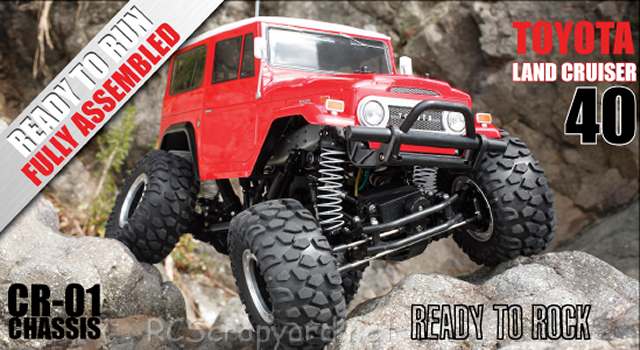
The ladder framed CR-01 chassis, employs two metal side bars, jointed by a number of fixed and pivoted ties and struts to allow it to twist and flex. Two bevel gear type differentials enclosed in tough plastic axle housings are employed with a third orbital gear differential mounted in the centrally positioned gearbox with the 540 motor. Two universal drive prop shafts link the axle drives to provide excellent controlled handling.
The suspension uses four oil filled dampers set at 45 degrees and four coil springs separately mounted behind each wheel.
Four huge 125mm tires are perfect to traverse all types of rough and rocky terrain with ease. In my opinion this is one of the best Tamiya Radio Controlled model designs to date.








|
|
|

|
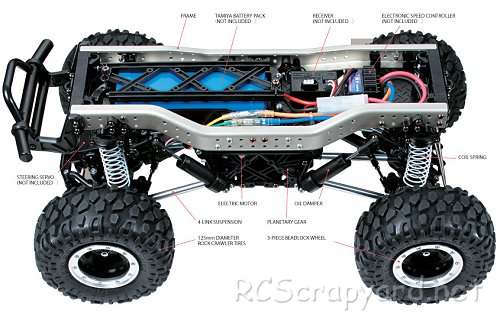
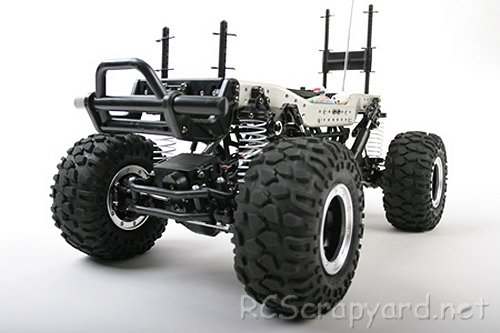
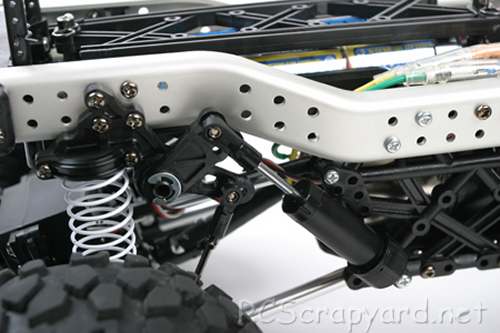
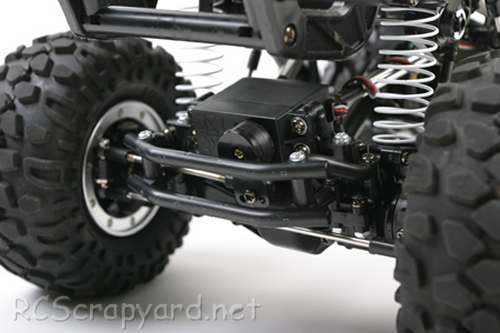
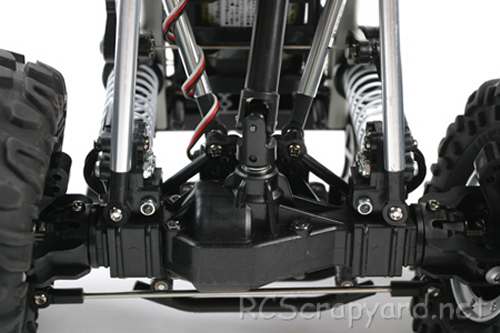
Buying a Used Tamiya Rock Crawler (and What to look for)
Make a General Visual Inspection
Check the Body-Shell
If the body shell of your Rock Crawler is broken, ripped or damaged in any way, this can be easily repaired with rubber solution glue. Also, for added protection and if available for your model, fit an under guard to stop dirt and gravel entering the chassis. Drive Shafts and Turnbuckles
Examine the Drive System
The gearbox of your used Rock Crawler should be opened up to check for damaged gears and wear. If there is excessive backlash in the gearing, these should be replaced. A thin coat of grease on the gears is enough to allow smooth operation and reduce further wear. Pinions and Spur Gears
Steering Servo and Servo-Saver
Don't Forget those Bearings
|









|






|
|
|
|
Hints, Tips and Information
Choosing a Transmitter
When you first started in RC, you may have purchased a package that came with the car kit, motor, battery, charger, ESC and radio system complete. The transmitter was probably just a basic steer wheel, or stick type, with nothing more than forward, reverse, left, right and simple trim settings to centralise the servo and ESC. |
|
Hints, Tips and Information
Ride Height
To allow the suspension on any RC model to do its work properly, it needs to ride in a position where it is able to react to any bumps and holes it may encounter on the track. Therefore, it needs to be adjusted to somewhere in-between those limits. That position is commonly termed "ground clearance" or "ride height" and is generally measured as the distance between the underside of the chassis and the ground, with the motor and battery etc installed. |
|
RC Models:
|
Radio & Motors: |
Other
Accessories: |